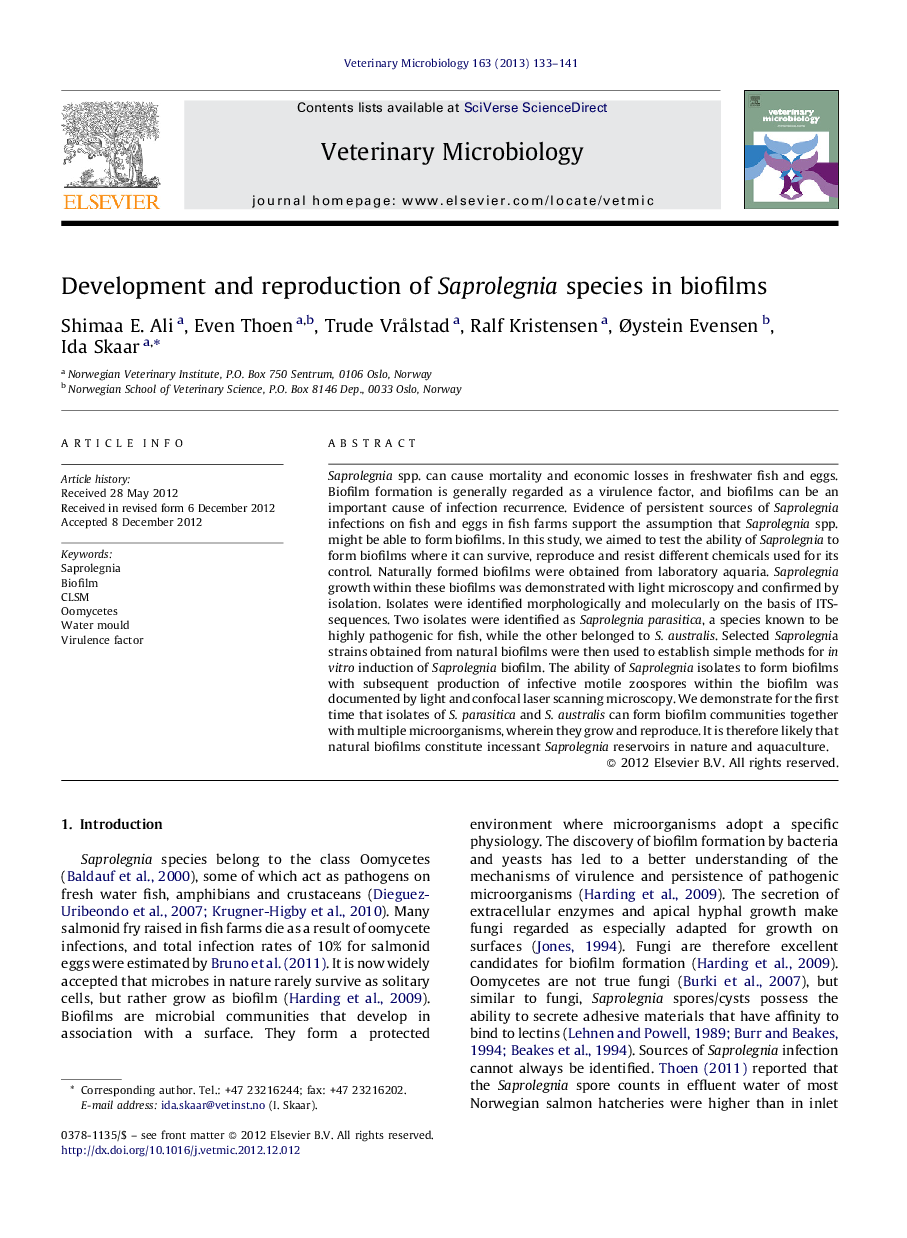| Article ID | Journal | Published Year | Pages | File Type |
|---|---|---|---|---|
| 2466907 | Veterinary Microbiology | 2013 | 9 Pages |
Saprolegnia spp. can cause mortality and economic losses in freshwater fish and eggs. Biofilm formation is generally regarded as a virulence factor, and biofilms can be an important cause of infection recurrence. Evidence of persistent sources of Saprolegnia infections on fish and eggs in fish farms support the assumption that Saprolegnia spp. might be able to form biofilms. In this study, we aimed to test the ability of Saprolegnia to form biofilms where it can survive, reproduce and resist different chemicals used for its control. Naturally formed biofilms were obtained from laboratory aquaria. Saprolegnia growth within these biofilms was demonstrated with light microscopy and confirmed by isolation. Isolates were identified morphologically and molecularly on the basis of ITS-sequences. Two isolates were identified as Saprolegnia parasitica, a species known to be highly pathogenic for fish, while the other belonged to S. australis. Selected Saprolegnia strains obtained from natural biofilms were then used to establish simple methods for in vitro induction of Saprolegnia biofilm. The ability of Saprolegnia isolates to form biofilms with subsequent production of infective motile zoospores within the biofilm was documented by light and confocal laser scanning microscopy. We demonstrate for the first time that isolates of S. parasitica and S. australis can form biofilm communities together with multiple microorganisms, wherein they grow and reproduce. It is therefore likely that natural biofilms constitute incessant Saprolegnia reservoirs in nature and aquaculture.
